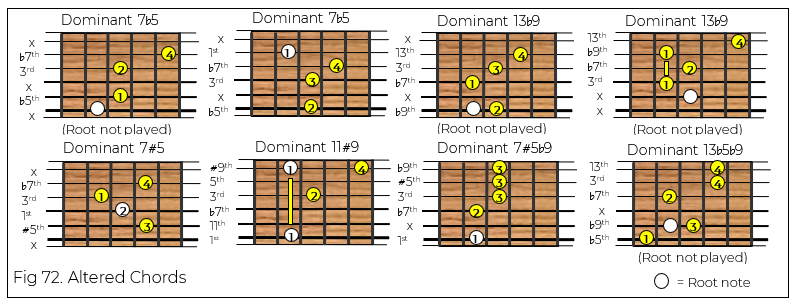In some instances we can flatten or sharpen certain notes in the chords to create even more ‘colour’. A typical use of altered chords is where we want to create a chromatic (or melodic) progression through the harmony.
This is used a lot in jazz where altered chords are voiced so that a chromatic melody line will appear through the chord progression, either in the bass line or in the treble.
The most common alterations occur on the dominant chord (eg. a 7, 11 or 13 chord), and can contain a b5, b9, #5, #9, #5b9, b5b9 or any other such modification. Here are some examples of altered chords on the guitar:

Listen (root notes on 5th fret):
These alterations are generally used in some sort of progression. They are useful to know as they can add colour and movement to an otherwise ordinary chord structure. Here are some examples of how these chords can be used, in the keys of G and C:

Listen (root notes on 5th fret):
As you can see above, the bass line is descending by one fret at a time as the chords progress.

Listen (root notes on 5th Fret):
Here the melody line (on the high E string) drops by one fret as each chord progresses. This gives a feeling of chromatic movement through the chords, which can be more appropriate and more interesting than just playing straight major and minor chords.